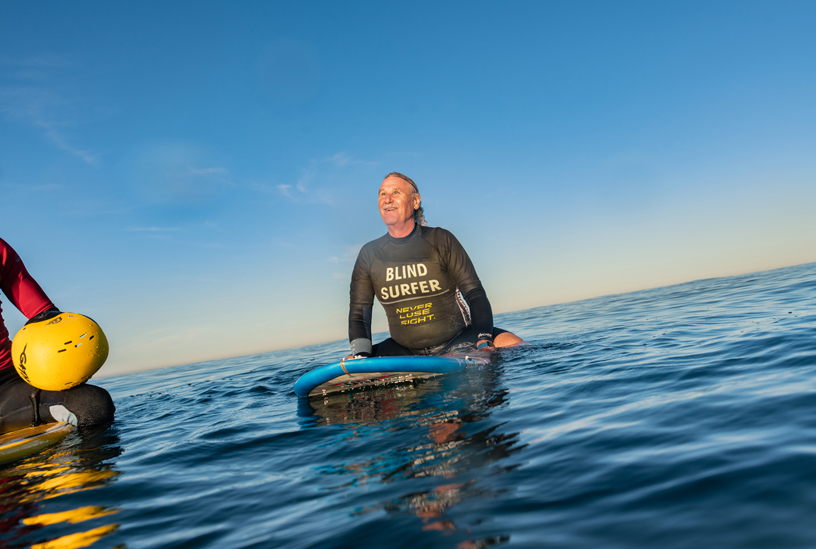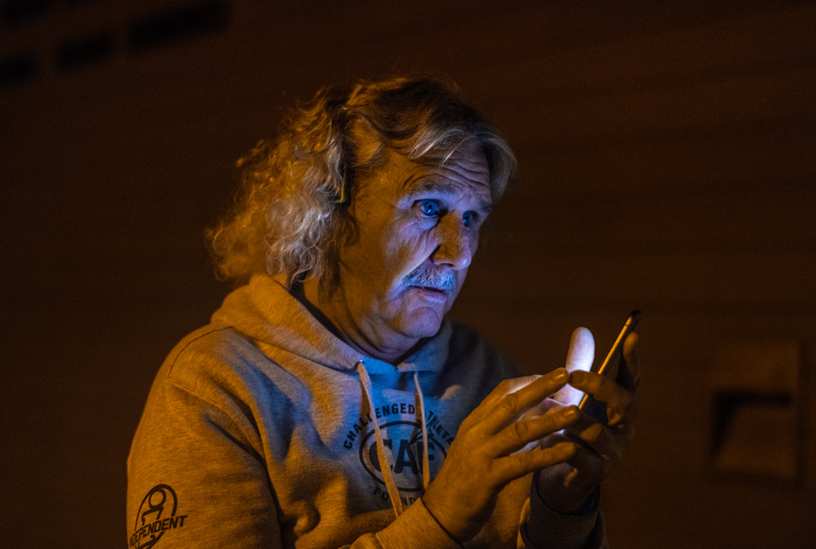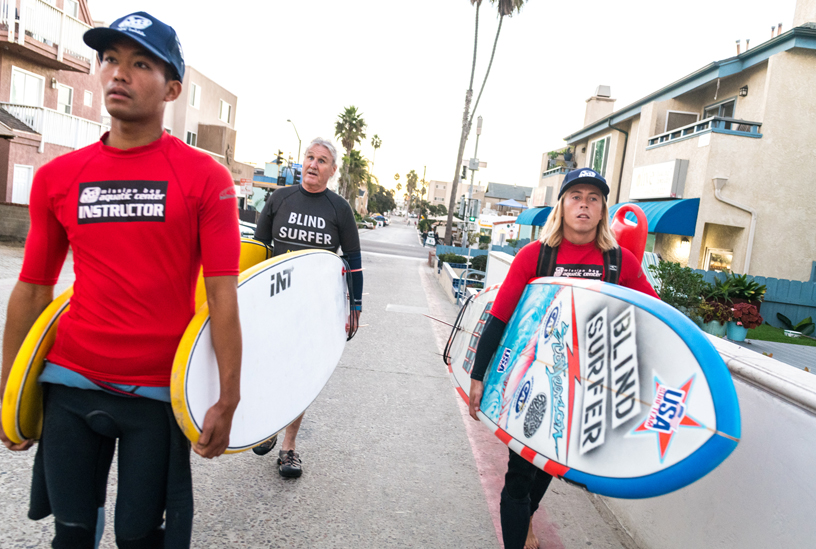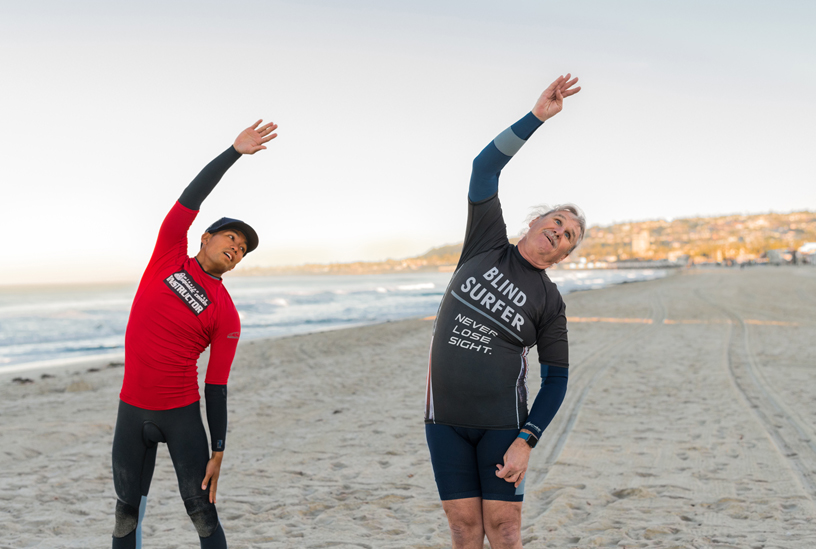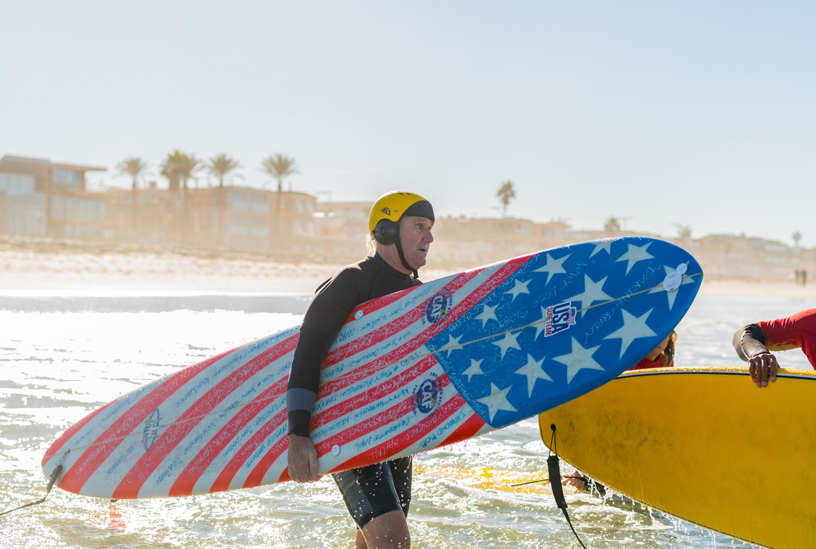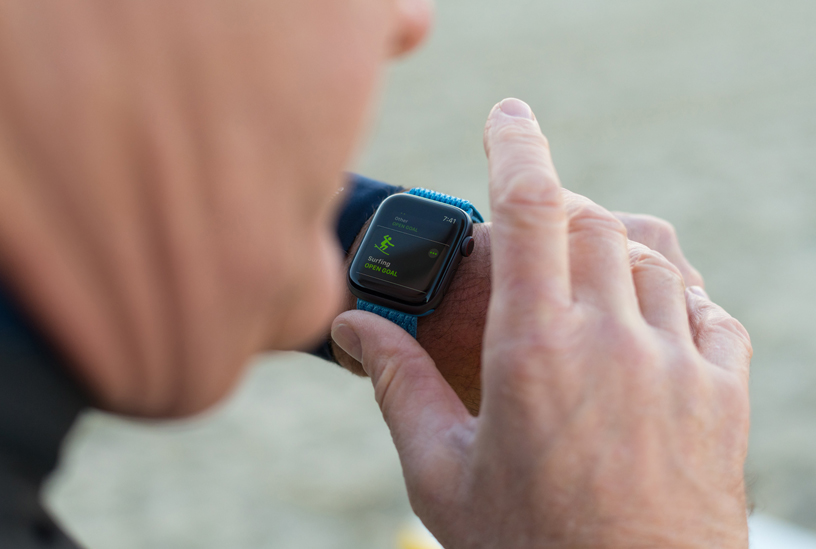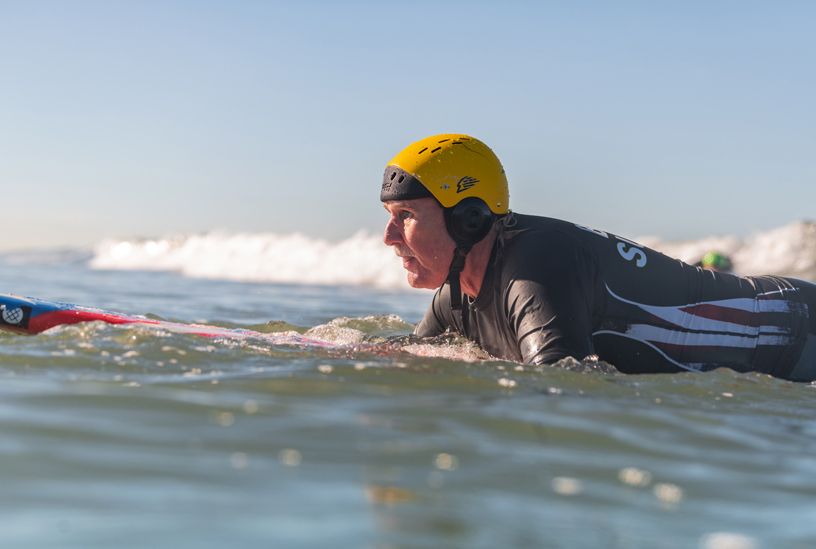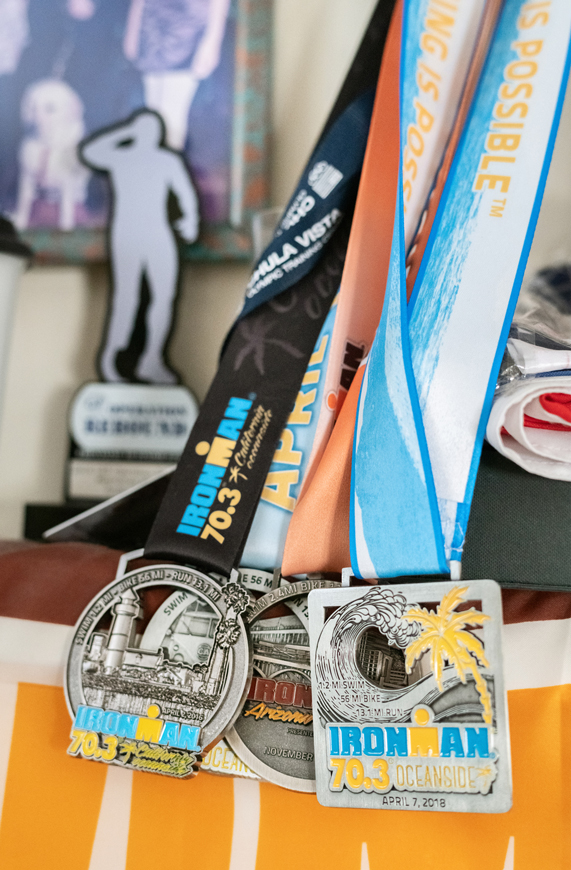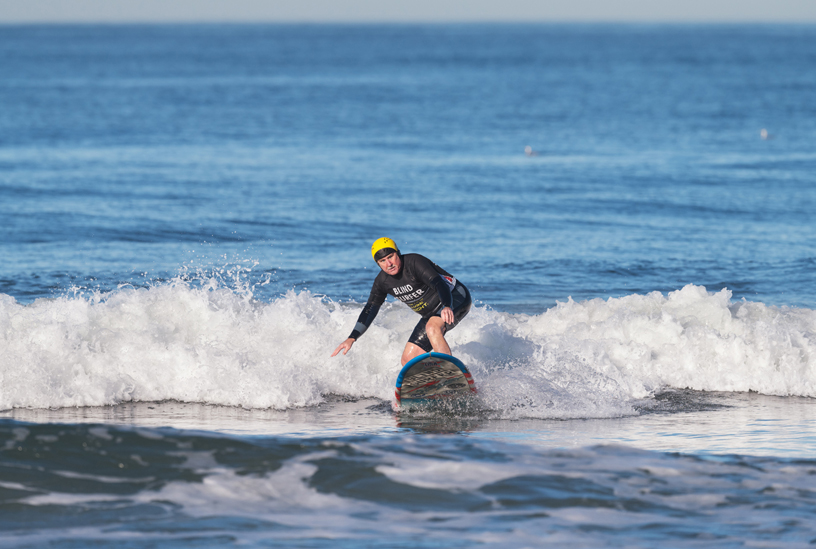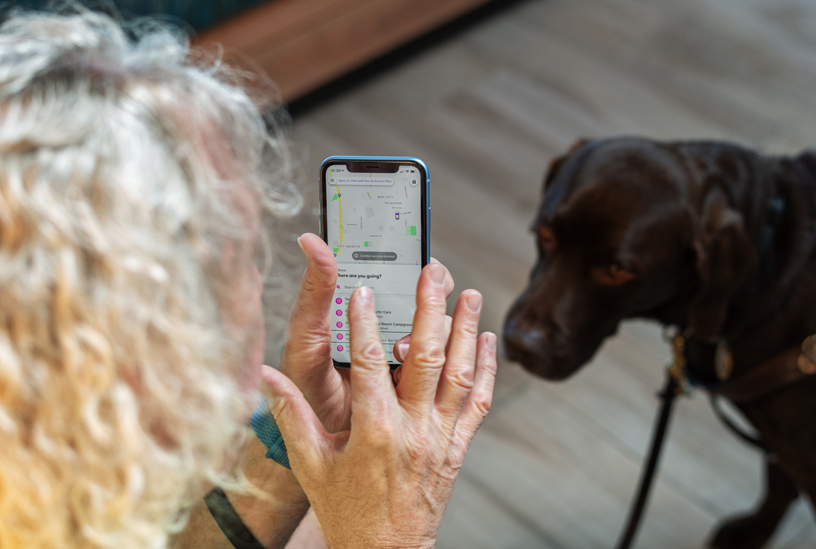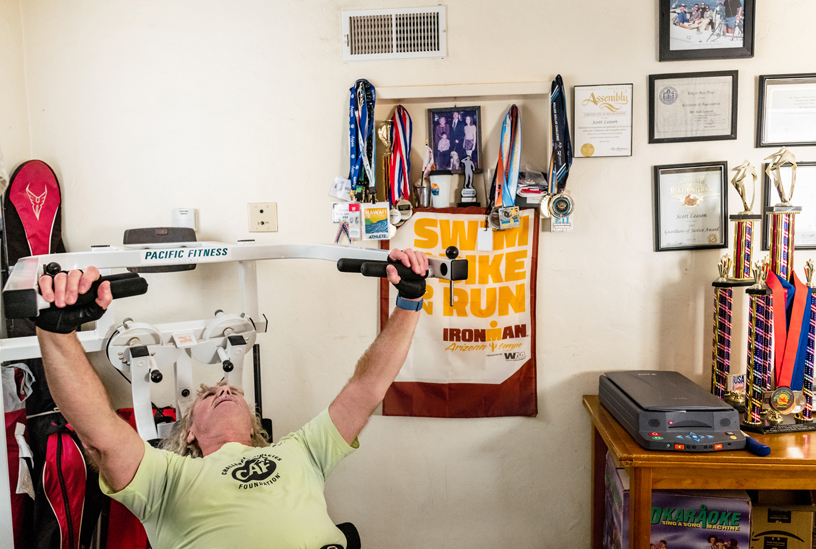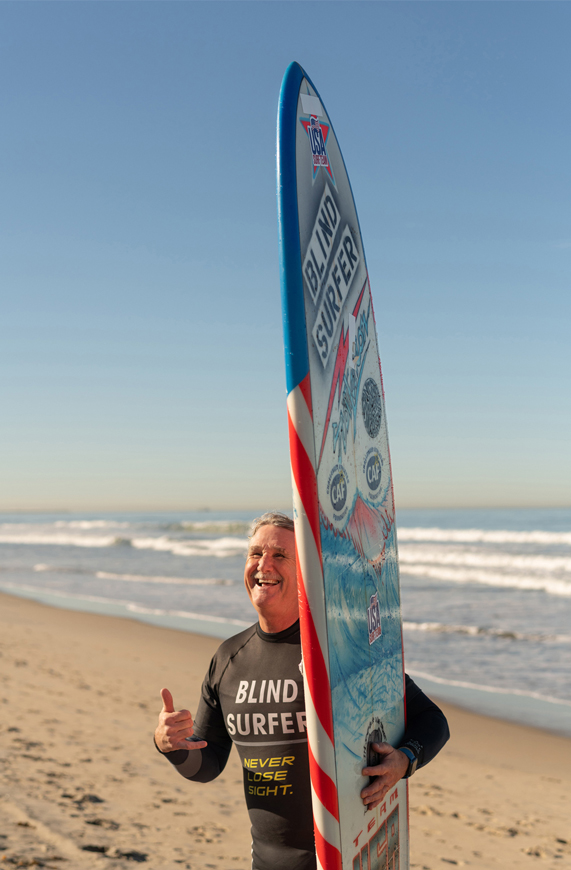Zpráva dne
09 listopadu 2018
Blind veteran catches second wave with a surfboard and iPhone
Scott Leason is an early riser. By 5:30 a.m., he’s checked his email, social media, the news and the weather. He’s reviewed the day’s surf reports via the Surfline app on his new iPhone XR, prepping for the day’s ride. Before the sun rises on this particular Friday, he’s geared up and ready to go for his session at Mission Bay Aquatic Center in San Diego where he’ll surf Mission Beach.
And he experiences it all without seeing it. Leason is blind.
A veteran of the US Navy, he was one of several visual communications experts — or “signal men” as they were called — stationed on the USS Tripoli amphibious ship, signalling vessel to vessel through flashing lights, Morse code and semaphore. After seven years of service, Leason was blinded when a robber’s bullet cost him both his eyes on July 4th, 1993. In 2009, after learning his new “normal” over several years, Leason received a computer and technology training from the US Department of Veterans Affairs’ Blind Rehabilitation Center that would be pivotal in his journey to living independently.
Accessible mobile computer technology was still nascent, but Apple’s iOS was quickly becoming a user favourite. In 2012, Leason received his first iPhone — the iPhone 5 — and training from Sarah T. Majidzadeh, assistant chief of Blind Rehabilitation at the Tibor Rubin VA Medical Center in Long Beach. “It’s a lot easier to navigate with the phone,” Leason says. “I think a lot of the visually impaired prefer the iPhone because they can do everything on it. And VoiceOver works pretty darn good.”
Leason is just one of many individuals who are blind or low vision who rely on VoiceOver to navigate daily tasks. In fact, more people in the blind community now use VoiceOver than any other mobile screen-reading software combined. Roughly 70 percent of the vets that have come through the VA’s 13 blind rehabilitation centres are provided with iOS devices and accessibility training. “These tools are levelling the playing field,” Majidzadeh says.
But Leason is no tech guru. Yes, he wears an Apple Watch to track his vigorous workouts at home and in the water. But he prefers to keep things simple and have all of his devices streamlined, something iPhone has done for both sighted and blind individuals. “Tomorrow I’ll be able to start my surfing workout,” he says. “It’ll be interesting to see what kind of calories I burn out there.”
He is also a serious athlete with a serious competitive drive. He wants to win, and a few times, he has: Leason was the first blind champion at the USA Adaptive Surfing Championships at Oceanside Harbor North Jetty in June 2016. The same year he won second place in men’s tricks at the USA Water Ski competition in Harmony, North Carolina. This year alone he competed in seven competitions in four different sports.
“When he showed me all the stuff he could do with [his iPhone], it just blew my mind that he had learned how to interact with it to get all of that out of it.”
Though Leason has been working with the Mission Bay Aquatic Center for 10 years, surfing is only a recent endeavour, an attempt to revisit a childhood pastime from growing up in Corona del Mar. Over the years, with support from the Challenged Athletes Foundation’s Operation Rebound program for vets, Leason and the Center have adapted, learned and grown as he conquers new feats in the water.
Paul Lang, instructional coordinator at the Mission Bay Aquatic Center, remembers some of the stumbling blocks in the early days they’ve since overcome. “When he water skis and wakeboards with us, usually we can communicate to the rider that the boat’s about to turn,” he explains. “Scott doesn’t have any of those cues so we had to come up with systems like, when we’re going to drop him off at the beach, we reach up and shake the line so he feels the line shaking and that’s our cue to him that we’re coming in. Those little things … we run into a roadblock, we figure it out with Scott, and come up with systems that work well so that everybody can do this.”
Lang, who has worked with Leason since before he received his first iPhone, is often blown away by his ability to adapt in and out of the water.
“The first time he got an iPhone and learned how to use VoiceOver, I asked him to show it to me because you just see him tapping the screen and to me it made no sense what he was doing cause it’s just like this flurry of tapping and these words coming out of the phone really really fast,” Lang says. “And when he showed me all the stuff he could do with it, it just blew my mind that he had learned how to interact with it to get all of that out of it. … He’s no different than anybody else. He’s just sitting in the corner over there getting caught up on his phone or listening to music, reading, and sending text messages.”
“It’s amazing how long ago 10 years feels in the world of technology,” says Kevin Waldick, assistant director at the Mission Bay Aquatic Center. “He was not very technologically savvy at all, but when he got his iPhone he was like ‘I can just do it. This is amazing.’ And so Apple does a really amazing job of making that accessible. These sports are accessible just like technology’s accessible. That’s been huge for him.”
As 2018 comes to an end, Leason has one month of wakeboarding and surfing until he and the Center take a break for the holidays. “When I’m at the end of a line behind a boat just like anybody else, I forget I’m blind,” he says. “And then when I come into the beach and there’s people around Snickers and I go yeah that’s my seeing eye dog and I got a board in my hand and they go, ‘you’re blind?’ That’s a cool feeling.
“The water sports are therapeutic but also I think it’s more of my identity and who I am, and who I grew up to be,” he says.
Back on land, Leason enjoys a spicy lunch while reliving the day’s waves. He’s wiped, but he still has a two-hour workout planned for later in the day. And with Snickers by his side, he’ll keep going. He’ll make a fundraising push on his GoFundMe page, he’ll plan out his competitions and activities for 2019. He’ll continue living life on his own terms. “I’m independent,” he says. “That’s the best way to describe the iPhone: independence.”
Images of Scott Leason
